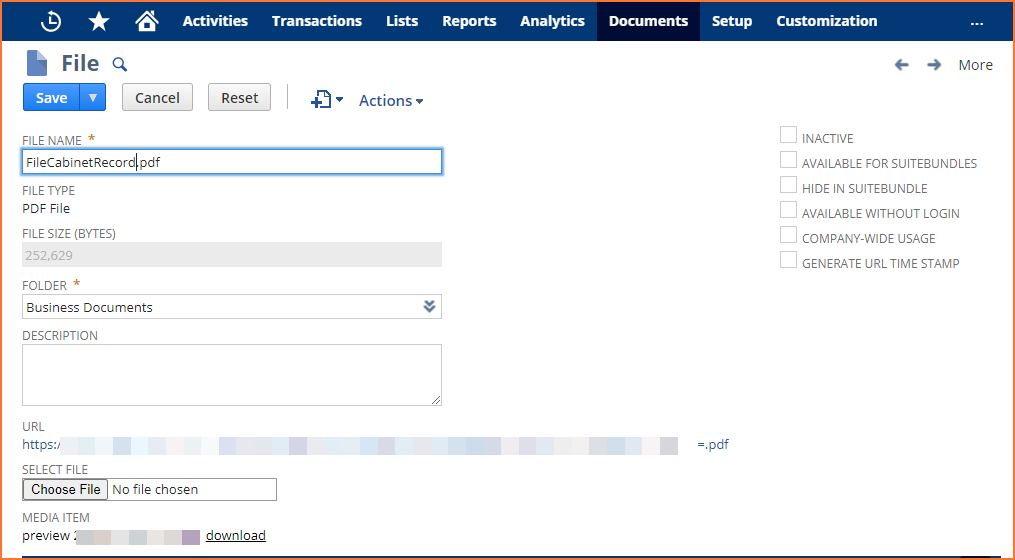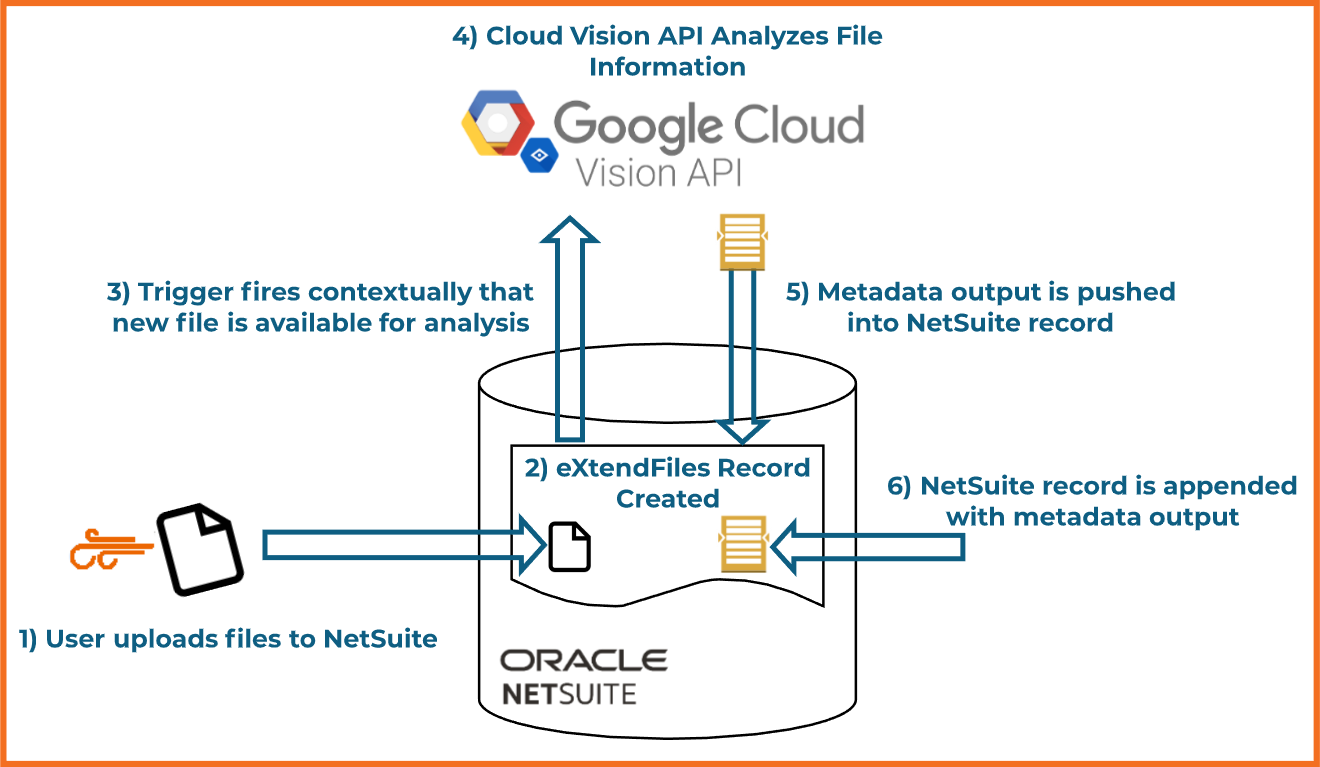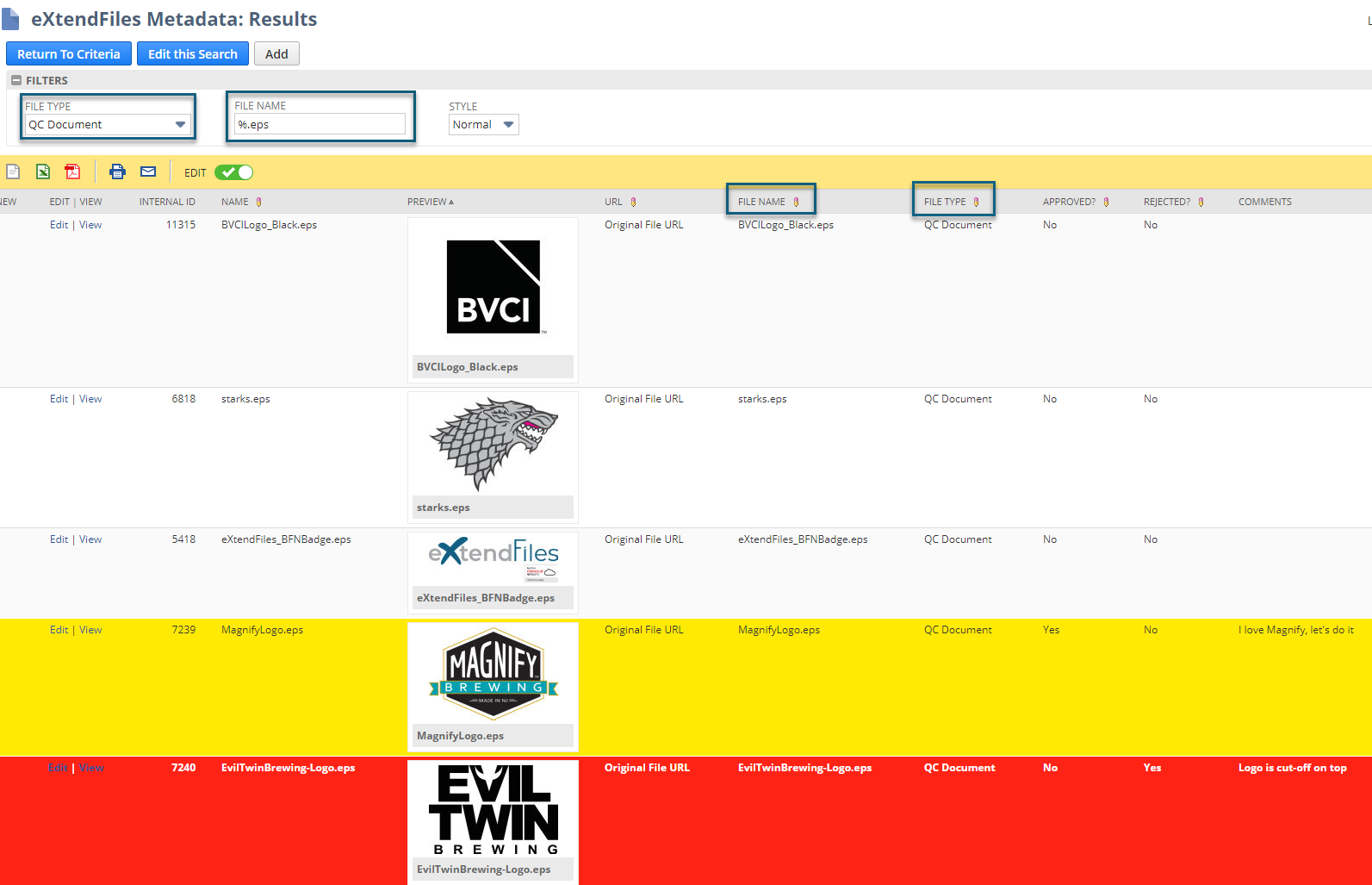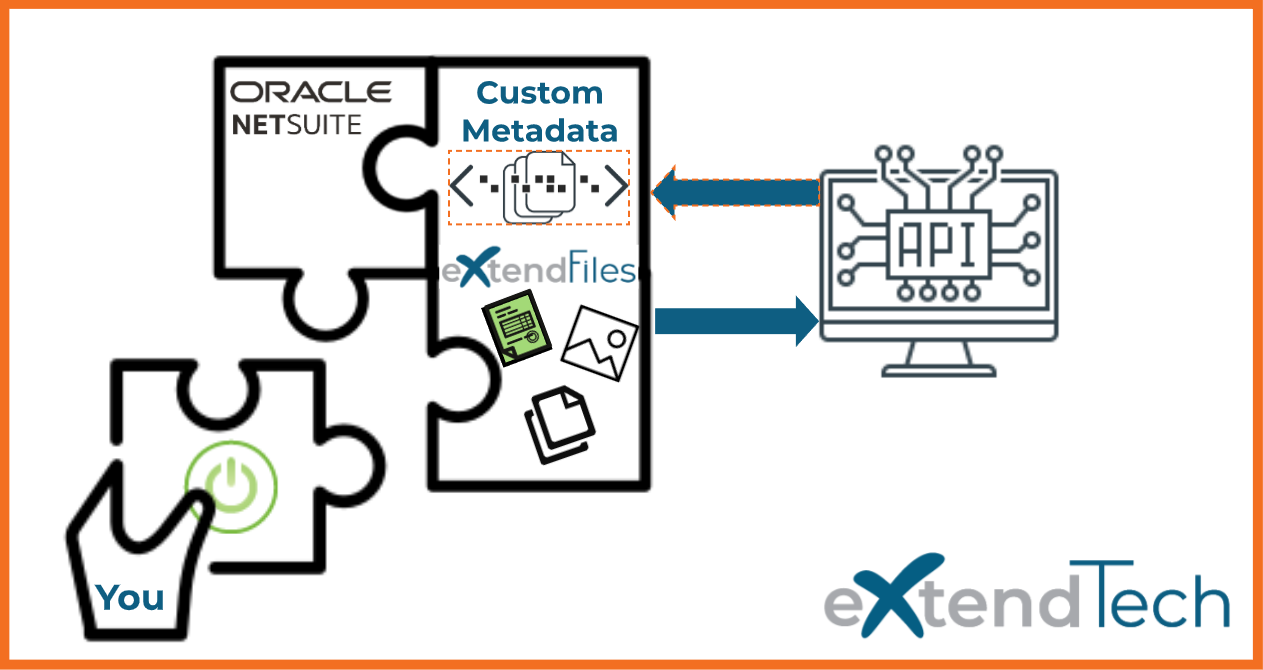Background
This article demonstrates how you can easily create and append custom metadata to the eXtendFiles file cabinet record within NetSuite. We will present a simple and an advanced use case showing how we’ve applied this. Then, we will show you how you can achieve functionality similar to that of a document management system (DMS) all within NetSuite.
Key Limitation of NetSuite File Cabinet
While the NetSuite file cabinet is useful for several functions, file upload size limits or the cost of additional file cabinet storage can be an issue. For example, we have a client that manages tens of millions of files exceeding 20 TB+. For that volume of files, the native NetSuite file cabinet certainly wasn’t happening in their world.
There is also a key limitation to the NetSuite native file record that we find to be very important and consider a gap. At this time, you cannot currently add custom fields or customize the NetSuite File Cabinet record in any way.

Simple Use Case – Manual metadata appending prior to load
We’ll start with a simple example that represents a feature that is an available configuration “out of the box” with eXtendFiles. There is a bundle field called “File Type (Custom)” which is a customizable list that can be tailored specific to your business requirement. With this being on the eXtendFiles record, you can now mandate a value (or default a value) in different contexts when files are added using native NetSuite functionality.
On the setup page, you can support 1:N file parameters to be set prior to allowing upload on a per record basis. Here’s an example of a typical configuration:

Once the configuration is enabled, user interaction with the NetSuite record will be prompted to select variable(s) prior to uploading files. This is demonstrated in the animation below, which shows the eXtendFiles Drag & Drop element only becoming available AFTER a file classification selection is made. For context, this example is being used in VIEW mode on a Sales Order record.

Based on how you build your eXtendFiles record, you can forge own path with how it behaves in your environment.
Advanced Use Case – Image Analysis using Google Vision API
Several of our clients manage corporate logo artwork to produce custom goods and apparel. We’ve always heard our supplier clients wondering how they could determine which corporations their customer base are working with on a macro level. This would provide insights to their customer base and provide opportunities to offer more relevant purchasing options that are tailored to their customers client base.
We believed that advanced image analysis coupled with customer data could yield some insights to fuel higher response & conversion rates to outbound marketing campaigns. We felt that when a recipient saw one of their beloved clients’ logos featured on the items being promoted, their responsiveness would increase. The control group was to be generic / non-relevant logos being served to compare results.
Here’s what we did
We decided to evaluate ten-thousand (10,000) eXtendFile records and run the associated image logos through the Google Vision API. Based on what the image API produced as an output, capture that meta-data output directly back into a custom field on the eXtendFile record. From there, we could then analyze and parse returns.
Once we had the API evaluate the images, it could push the output directly back to the eXtendFiles record and we could evaluate that metadata to derive insights about the clients’ customer base. This presented opportunities to dynamically apply client logos in outbound marketing campaigns and improve relevancy to the audiences’ corporate client base.

Meaningful Results Returned
By running this image API against the file records and pushing the meta-data output back on the eXtendFile, we were able to pull consistent “Corporate Logo” recognition as an output from the Google API. We saw values like “John Deere”, “Whataburger”, and “Coca-Cola” coming back from the API payload. We then appended that back to the eXtendFile record and the world opened up with insights.

Due to the eXtendFile record being joined to transactions and customers within the NetSuite database, we could now associate Corporate clients with the customer record. We ran Saved Searches to create segments / groups based on corporate logo customers.
This provided our Client with visibility to their Customers’ end buyers and allowed them to leverage the image files within their marketing efforts to place contextually relevant logos to their audience within their digital marketing campaigns. The client saw a 10x response rate increase compared to previous “blind” efforts by serving up the content that was relevant to them.
Why this works and how it can work for you
One of the primary differentiators is that eXtendFiles is built as an unlocked Custom Record, this enables your to innovate and act with the utility on your own.
This is the simple, but very real magic on how we built the integration which enables you to leverage eXtendFiles beyond a file repository connector.

By giving you control over the record, you can now transform your files into saved searches and sublists, layer in fields and leverage filters, inline editing, and all the fundamental features inherent to NetSuite Saved Searches.

In Conclusion
By embedding the eXtendFiles integration utility directly into an unlocked custom record structure, the possibilities of file processing workflows and automation are quite tremendous.
Another idea could be capturing documents from your vendors (i.e. invoices) or customers (i.e. sales orders), and setting a service into action to scan/read the document and push the data back to the NetSuite record. Then create a workflow or script to start performing transformation or entry work automatically and automate transaction processing.
Leveraging the solution in tandem with the customization capabilities of NetSuite now presents an advanced document management platform capability within the native, and familiar, NetSuite record structures.
If you see an opportunity to innovate within your business, and you would like to explore producing some powerful solutions leveraging these concepts, we can help.
Subscribe to Our Blog
Receive updates whenever a blog goes live!

